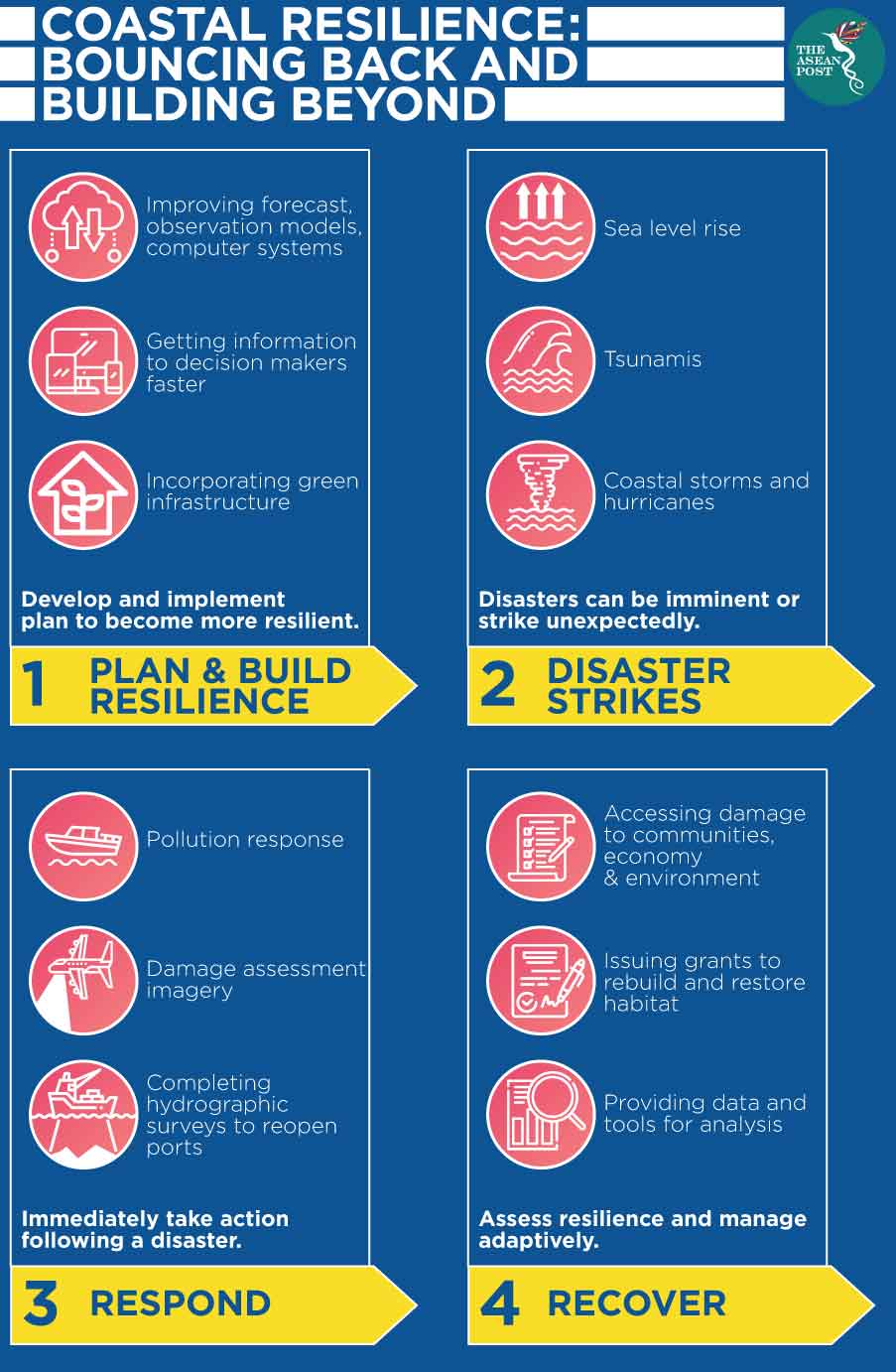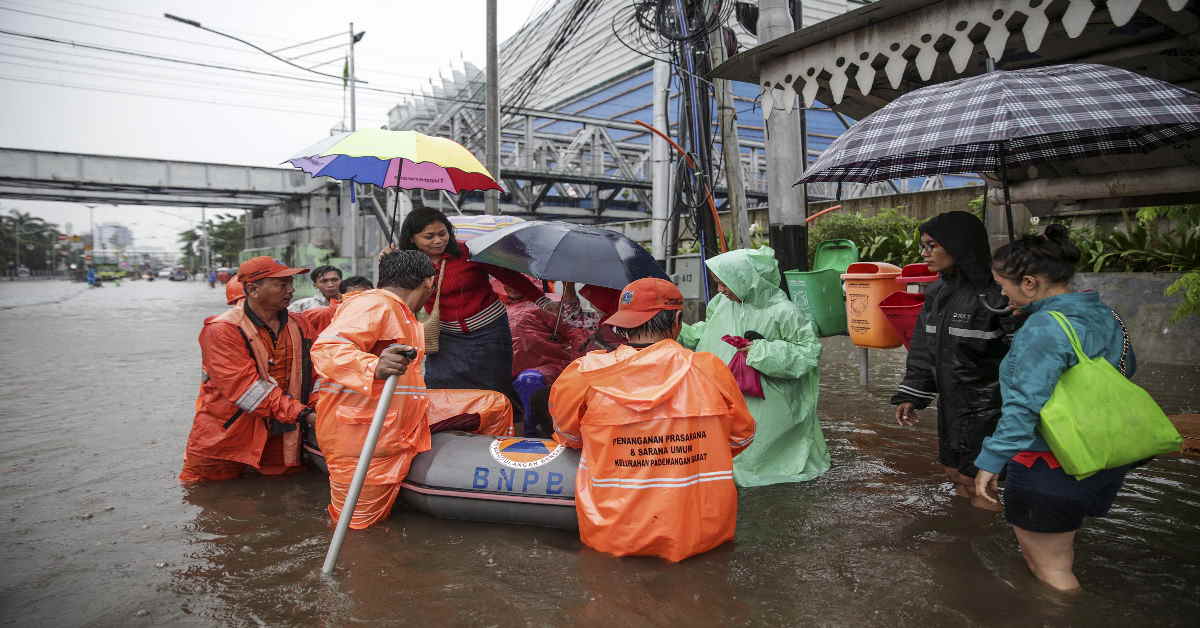With 80 percent of the region surrounded by water, ASEAN regularly faces water-related disasters such as floods, cyclones and storms – which are heightened by climate change.
Greenhouse gases (GHG) are progressively warming the environment, and melting ice sheets and glaciers are increasing the volume of the world’s oceans and causing devastating coastal flooding across the world.
Floods and storms have historically been two of the most frequent types of disasters reported in the region, and a joint report by the Republic of Korea (ROK)-ASEAN Cooperation Fund in 2017 on water-related disasters in ASEAN outlined how floods and storms accounted for 64.1 percent of the total number of disasters and close to half of total lives lost in ASEAN from 1970 to 2014.
Higher and more frequent coastal flooding is a direct impact of sea-level rise, and the risks are especially prevalent in Indonesia, Thailand and Vietnam according to a worrying report in the Nature Communications journal which triples estimates of global vulnerability to sea-level rise and coastal flooding.
Using a form of artificial intelligence (AI) known as neural networks to correct previously erroneous coastal elevation data, research and advocacy group Climate Central published a report last month which estimated that roughly triple the number of people in coastal areas are expected to be at risk from coastal flooding in 2050 as compared to previous data.
Vietnam, home to 31 million people could be lower than the average local annual coastal flood height in 2050. In Indonesia and Thailand, the numbers for those who could be threatened with saltwater flooding at least once per year at mid-century are now 23 million and 12 million, respectively. Previous estimates saw Vietnam home to nine million, Indonesia five million and Thailand one million, people at risk.
Factor in coastal erosion and population growth, which the study did not, and these numbers are bound to be higher.
More people vulnerable
Among the major ASEAN cities that could potentially be submerged by 2050 include Bangkok, Jakarta, Ho Chi Minh City and Manila, where millions of residents in low-lying areas will find themselves living in flood zones.
Globally, 300 million people – an increase of 221 million people from previous estimates – currently live below the elevation of an average annual flood in 2050.

“Sea-level projections have not changed,” said Ben Strauss, the report’s co-author.
“But when we use our new elevation data, we find far more people living in vulnerable areas that we previously understood,” added Strauss, chief scientist and CEO of Climate Central.
Climate change has the potential to reshape entire global regions within our lifetime, and as the report’s lead author and Climate Central scientist Scott Kulp noted, nations will increasingly question the strength of their coastal defence systems as tidelines rise higher than the ground people call home.
Safety and resilience
In a bid to save their capitals from going underwater, Indonesia has announced plans to shift its administrative centre from Jakarta to the island of Borneo while Thailand is also mulling a similar idea for Bangkok – although both cities already have flood walls.
Groundwater extraction has caused parts of Bangkok and Jakarta – two of the region’s biggest urban areas – to experience land subsidence, or a sinking of the Earth’s surface, and floods have wreaked havoc on both cities in recent memory.
Floods inundated 50 percent of the land in metro Jakarta in 2007, causing 80 deaths, displacing 400,000 people and costing some US$550 million in damages.
Bangkok, built on once-marshy land about 1.5 metres above sea level, experienced a flood in 2011 that inundated approximately six million hectares of land, affected more than 13 million people and cost the country US$46.5 billion.
Building a culture of safety and resilience at all levels is key to mitigating the effects of flooding – and other natural disasters – across the region.
To further promote the efforts for disaster risk reduction and resilience in the region, the ROK-ASEAN Cooperation Fund report states that understanding the existing disaster risk forms the basis of developing appropriate strategies and policies for risk management in each country.
Raising awareness on disaster risks at all levels, maintaining political momentum and promoting multi-stakeholder action to reduce increasingly dominant disaster risks are other key steps ASEAN nations will have to undertake as the region prepares for some stormy waters ahead.
Related articles:
